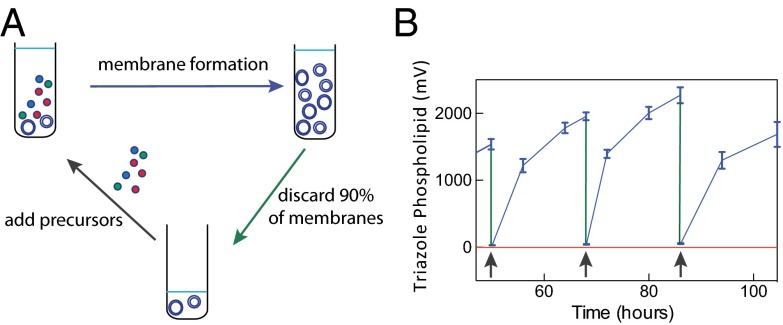Fig. 3.
Continual synthesis of catalytic membranes through serial transfers. (A) Vesicles containing embedded ligands are combined with a solution containing ligand and phospholipid precursors, as well as a source of Cu1+(black arrow). Over time, these precursors are converted to additional catalytic vesicles (blue arrow). Once the precursors are depleted, a fraction (10%) of the vesicle population is isolated (green arrow) and combined with a fresh precursor solution, enabling further membrane formation. (B) Triazole phospholipid vesicle synthesis with sequential serial transfers of vesicles containing TLTA ligands (blue line) into fresh precursor solutions shows repeated and long-term (>500 h, SI Appendix, Fig. S9) phospholipid formation relative to control vesicles lacking TLTA ligands (red line). Black arrows indicate the time at which vesicle transfer to new precursor solutions took place. Phospholipid was monitored using LC-MS-ELSD measurements (raw ELSD data shown). Initial conditions for displayed rounds: 120 μM CuSO4, 60 μM hydroquinone, 450 mM TES, 40 mM Mops, 54 μM tripropargylamine, 558 μM alkyne lysolipid, and 925 μM alkyl azide. Error bars represent SDs (n = 3).

